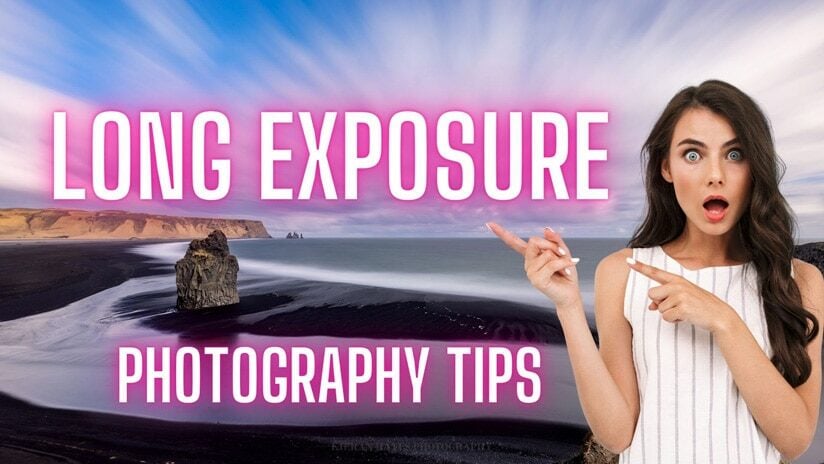Long Exposure Photography : The Ultimate Beginners Guide tips and tricks.
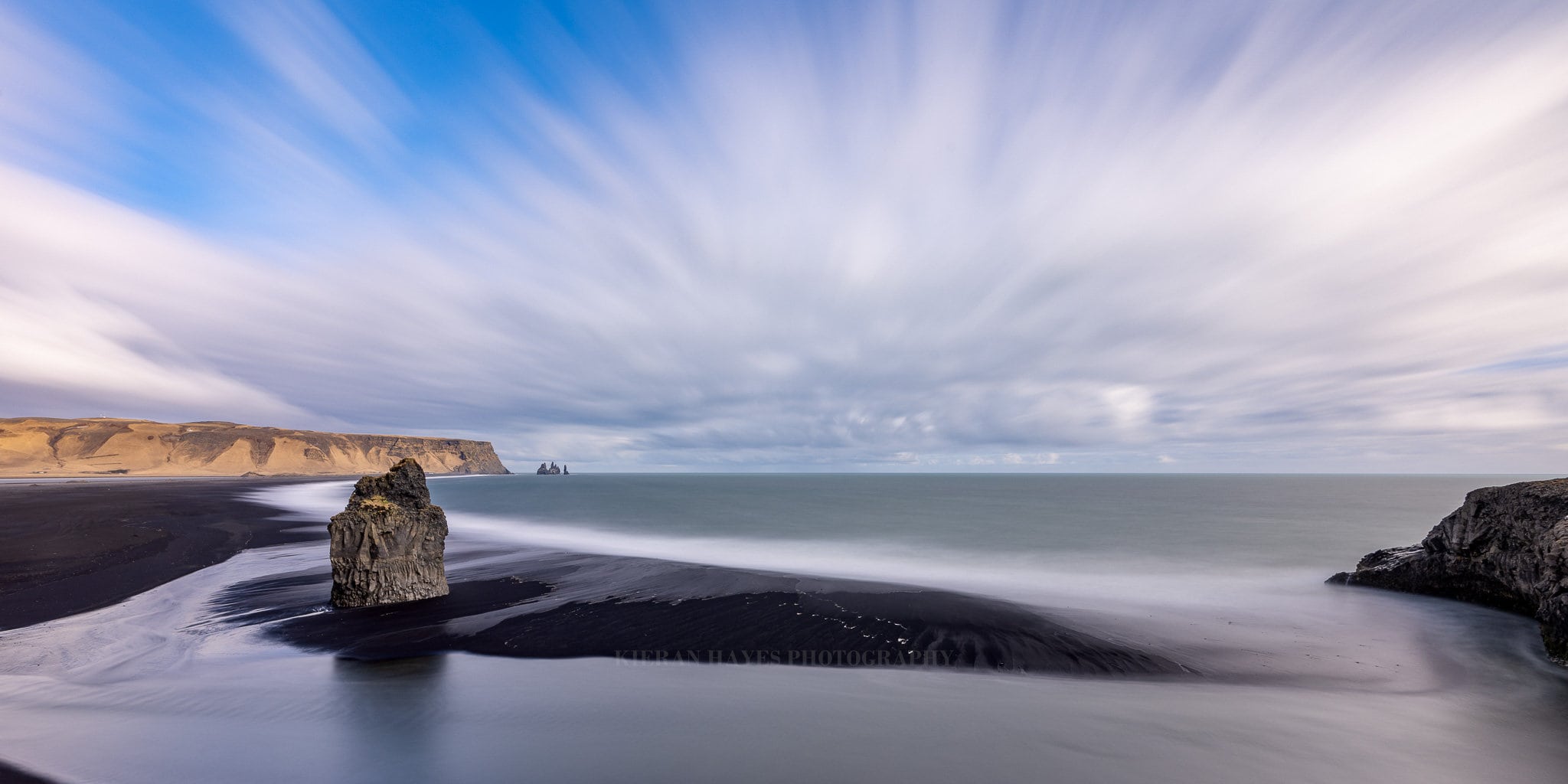
Long exposure photography explained simply.
Long exposure photography is a technique that allows photographers to capture dramatic and mesmerizing images by keeping the camera’s shutter open for an extended period of time. This technique is often used to create stunning effects such as smooth waterfalls and light trails from moving vehicles. I share my top tips and tricks for mastering long exposure photography. Including equipment recommendations, camera settings, and creative composition techniques. Whether you are a beginner looking to dive into this exciting genre of photography or a seasoned pro looking to refine your skills, this guide is sure to help you improve your long exposure photography game.
Firstly and more importantly Long exposure Photography is all captured in camera and is not digital art, it’s not photoshopped either it’s a real photograph. The only difference is, it has taken a bit more time to capture the photograph.
We can use this slower shutter speed to highlight movement in water, clouds, cars, people and even stars. Personally, I use Long Exposure Photography a lot in my Seascape Photography again I will explain all this directly below in a lot more detail.
If you would prefer to watch my Long Exposure Photography Tutorial video, then please further down this page to view it.
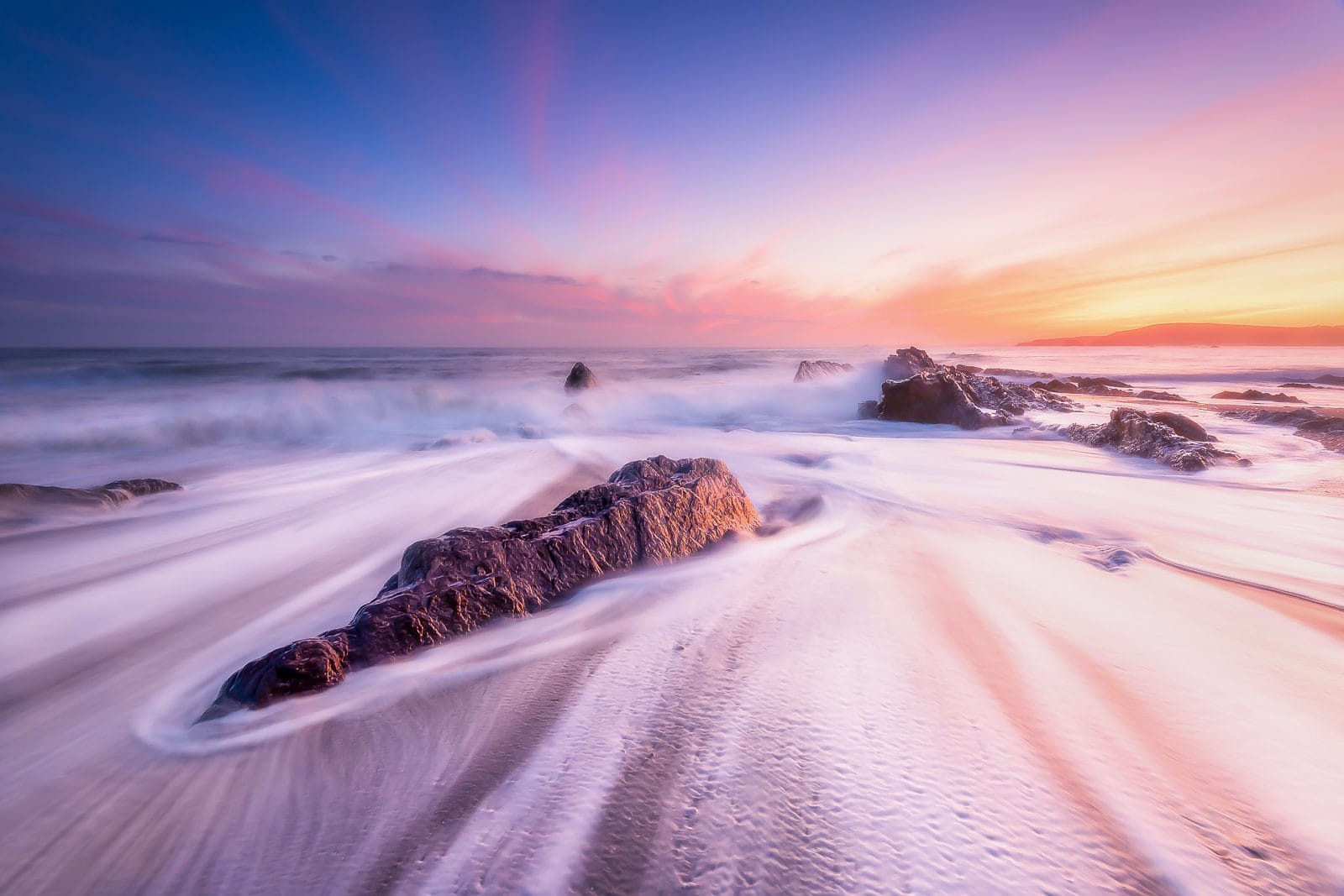
What is Long Exposure Photography?
Long exposure photography is the art of taking a photograph for a longer period of time so the elements of your photograph that are moving are blurred and the static or still parts of the photograph are pin sharp.
Just picture a child running around in a house and you take a photograph. When you look at the photograph their face and body might be pin sharp but their hands and legs are blurred as those parts of their body were moving incredibly fast when the shot was taken.
Well, with Long Exposure Photography were are doing the very same thing only we are exagerating or amplifing this effect to give us the movement we desire.
Why would you use Long Exposure Photography?
So we can capture movement like the clouds gliding across the sky, water flowing down a river, a waterfall or even the sea and how the waves move back and forth along the coastline. Long exposure photography can also be used to capture star trails at night time as well as car headlight trails in cityscapes.
This all helps us as artists to create a surreal effect in our photographs and this adds yet another dimension for us photographers to blend and mould into our work.
Long Exposure Photography examples
I have a number of Long Exposure Photography examples below where I talk you through the shutter speeds I used, how it was shot and the effect this achieved in each image.
The first photograph below is a 60 second exposure and I used a Formatt Hitech Firecrest Ultra 13 stop Neutral Denisty filter (more on ND filters below) to capture this shot. The 60 second exposure helped to soften out the water completely and because I used a wide angle lens you can see some lovely movement in the clouds giving you a very dramatic effect, the rainbow was just a huge added bonus 🙂
I have an article on the 13 stop and 16 stop ND filter here if you are interested.
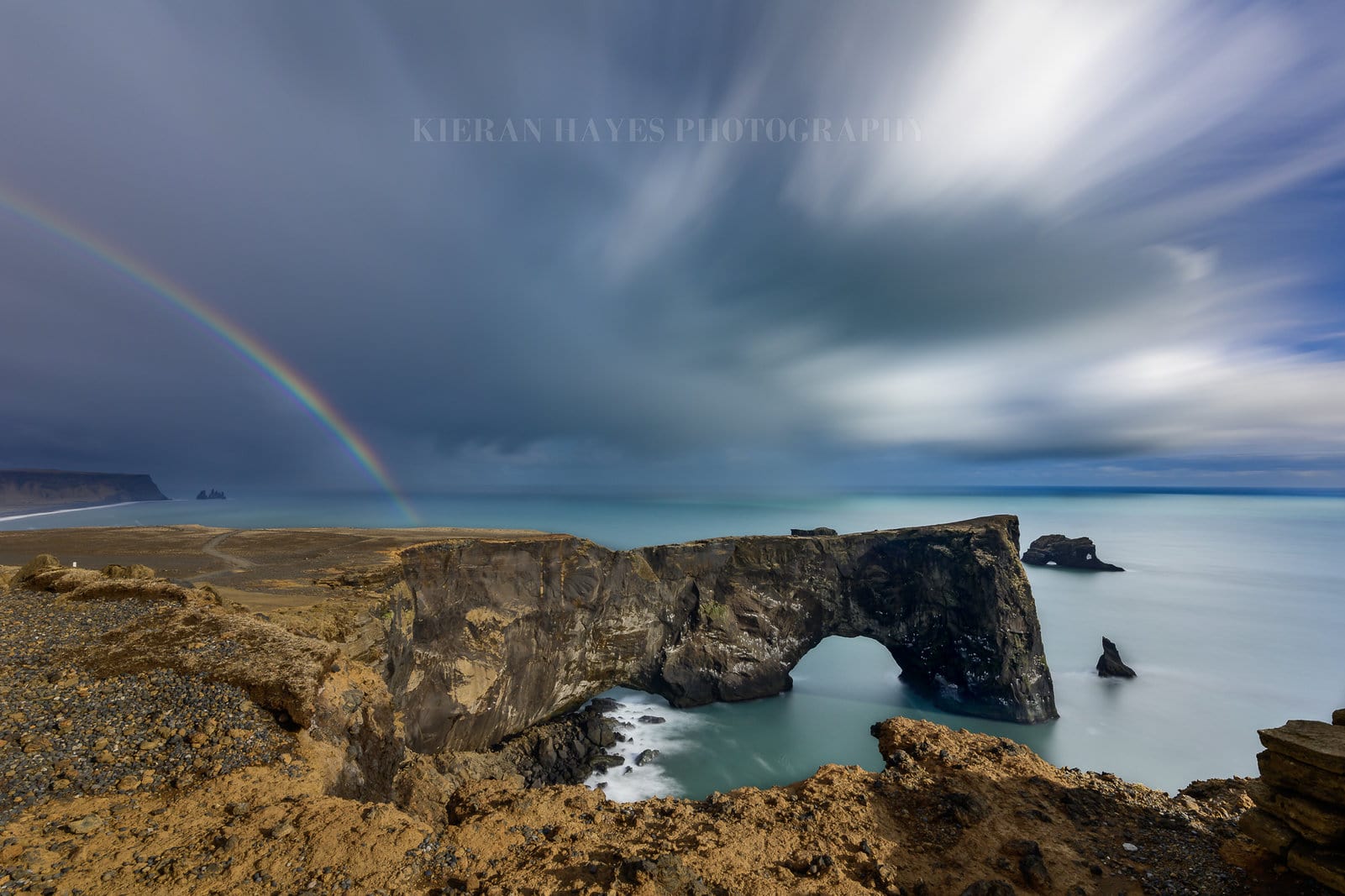
Shorter Long Exposures.
In the second photography below I used a very short long expsoure of 0.6 of a second to create this dancing like effect in the waves and keep some nice detail in the water.
If you look closely at the foreground water there is this slightly soft effect in the fast moving parts of the water. I also shot this at F8 to help naturally soften out the background of the image.
I managed to get a 0.6 of a second exposure by using a six Stop Firecrest Ultra Neutral Density or ND filter and I balanced out the exposure by using a 4 stop Firecrest Ultra Graduated filter (I will explain what these filter do below).
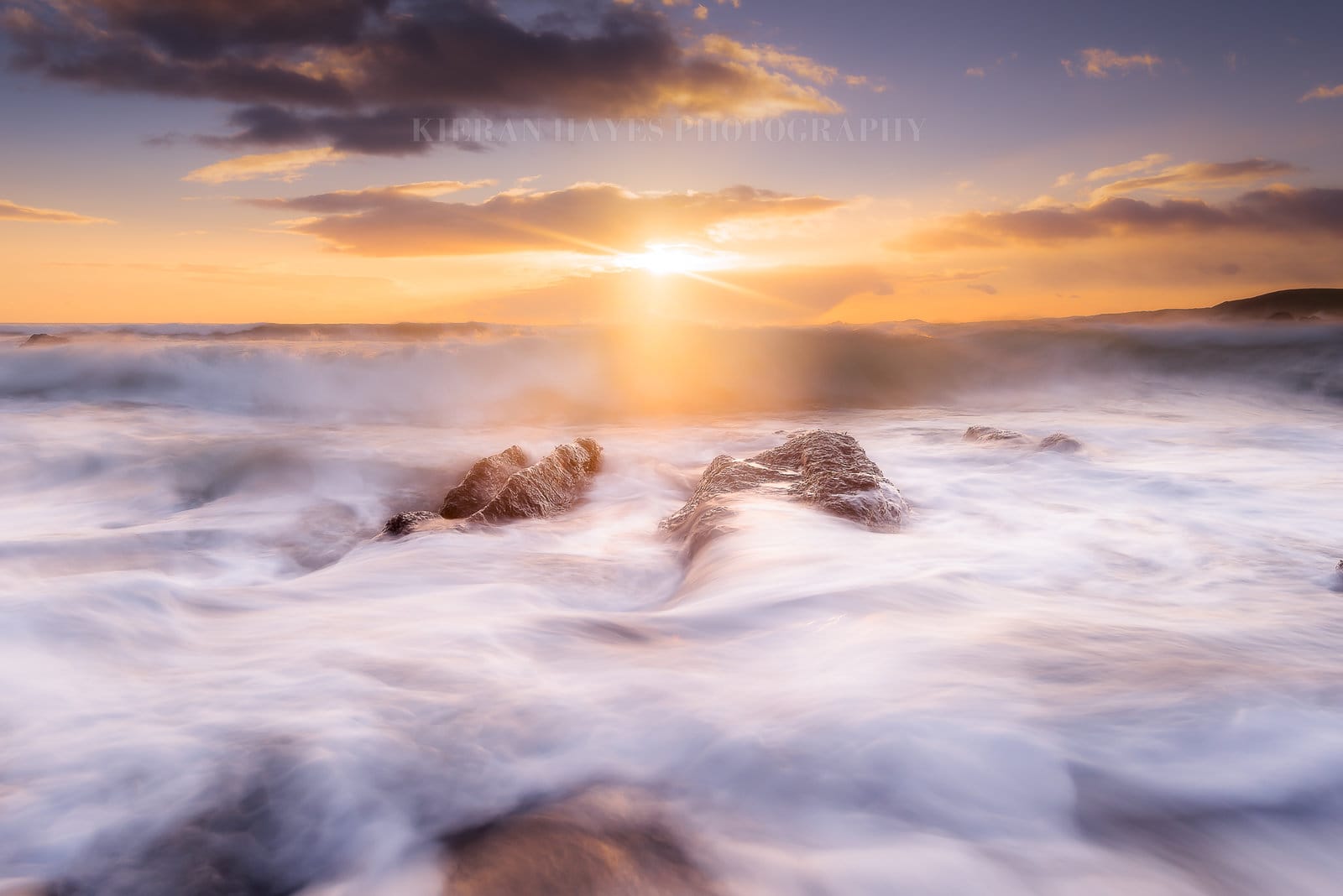
Now of course there are loads of different effects that you can get with Long Exposure Photography and the two examples above show just two extremes that can be created with this awesome technique.
So how do you take Long Exposure Photographs.
To simplify it for you I have two cheat sheets below, If you have ND filters then you can skip to the second cheatsheet :-). If you are interested in purchasing Nd filters then please feel free to use my Formatt Hitech Discount Code here.
My Long exposure photography cheat sheet without a Neutral density filter.
- In daytime you wont be able to take long exposure photographs without an ND filter so try this at dawn or Dusk when the light level is a lot lower.
- Setup your Tripod, making sure it’s steady and make sure it’s as straight as possible (not leaning sideways) and put your camera on it. Yes it may seem obvious but the most important part of a long exposure photograph is to keep the camera perfectly steady while you are taking the photograph.
- Adjust your Camera’s ISO to ISO100 or 200 whichever is your lowest native ISO setting. Google is your friend here. This step is vital as otherwise your camera will boost your ISO to give you a faster shutter speed and you wont get a long exposure photograph then.
- Point your camera towards some clouds, moving water, cars at night time or stars in the sky, anything that moves really.
- Zoom your lens out fully. Most kit lenses are 18-55 so in that case go to 18mm. Wider is better here…
- Set your camera to Aperture Priority (Manual Mode is better if you know how to use it).
- Change the Aperture to F11. In aperture priority mode your camera will always select the correct shutter speed for you to balance out the exposure. If you don’t know how to change your aperture then google is your best friend here again.
- Focus and compose your shot.
- Take a few shots under different lighting conditions and see the effect.
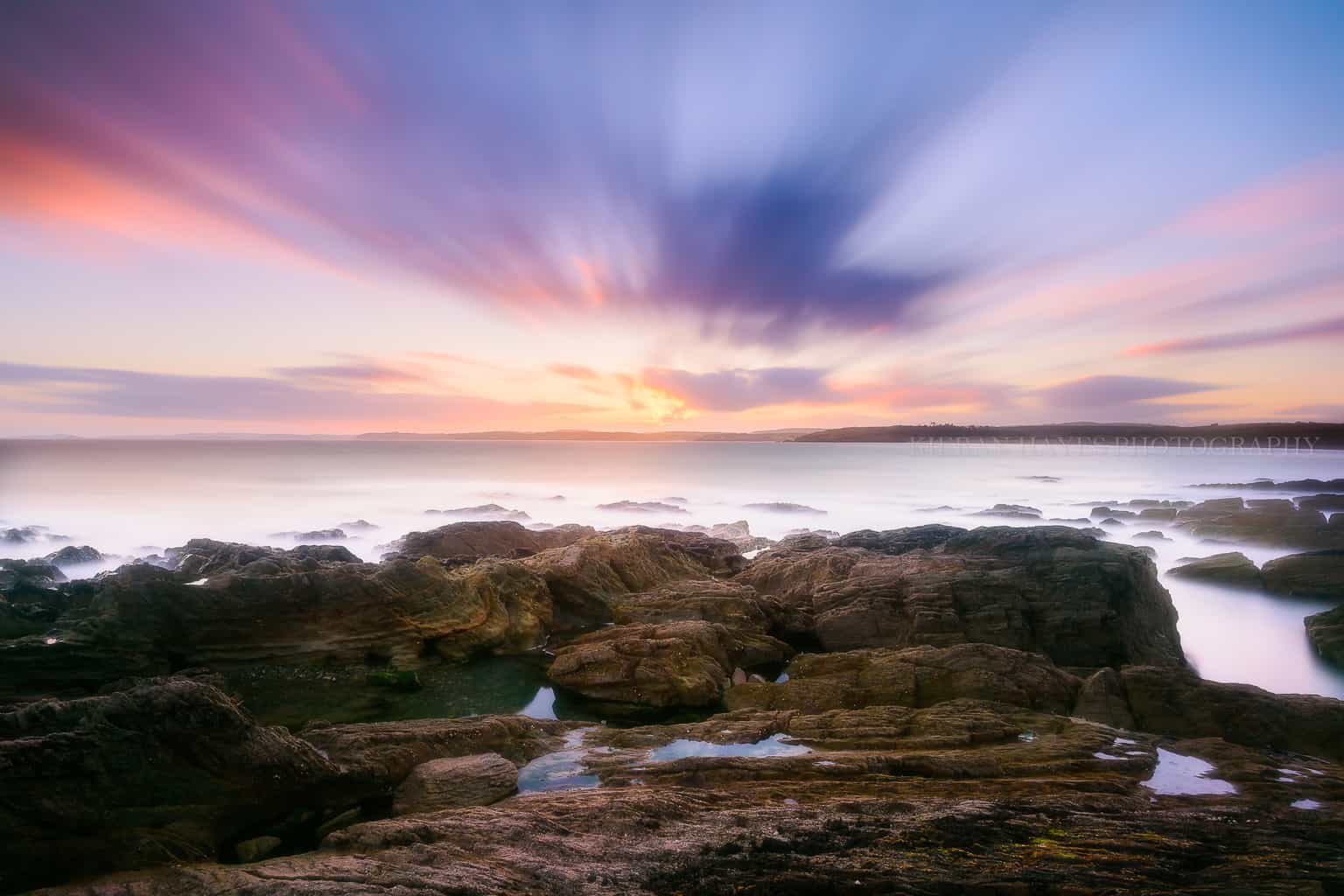
My Long exposure photography cheat sheet with a neutral density filter.
The most popular ND filter is a 10 stop ND filter so let’s start with that one…
- Using a ten stop ND filter in daytime generally gives you around a second or two of a shutter speed depending on how bright it is of course and your camera settings, towards sunset time though you should see that go up towards 30 seconds and beyond. This is when we can get some amazing long exposure shots.
- Setup your Tripod, making sure it’s very steady and as straight as possibly (not leaning sideways) and put your camera on it. Yes it may seem obvious but the most important part of a long exposure photograph is to keep the camera perfectly steady while you are taking the photograph.
- Adjust your Camera’s ISO to ISO100 or 200 whichever is your lowest native setting. Google is your friend here. This step is vital as otherwise your camera will boost your ISO to give you a faster shutter speed.
- Point your camera towards some building with moving clouds in the background, moving water or anything that moves really.
- Zoom your lens out fully. Most kit lenses are 18-55 so in that case go to 18mm.
- Set your camera to Aperture Priority.
- Focus your camera and compose your shot.
- Fit your ND filter to your camera.
- Change the Aperture to F11. In aperture priority mode your camera will always select the correct shutter speed for you. That’s generally done by rotating the wheel at the back or top of your camera, google is your best friend there again.
- Take a few shots under different lighting conditions and see the effect.
You should see some very nice movement in your photographs using either of the cheat sheets above.
If you want a longer exposure again then you need to take the photographs when the light level has dropped even more or to experiment you can also set your aperture to F16 as this will half the amount of light coming into the camera.
Or if you want to take shorter long exposures then you need to shoot at a time when there is more light or use a weaker ND filter if you are using one. So for example instead of using a 10 stop ND filter use a 6 stop ND filter.
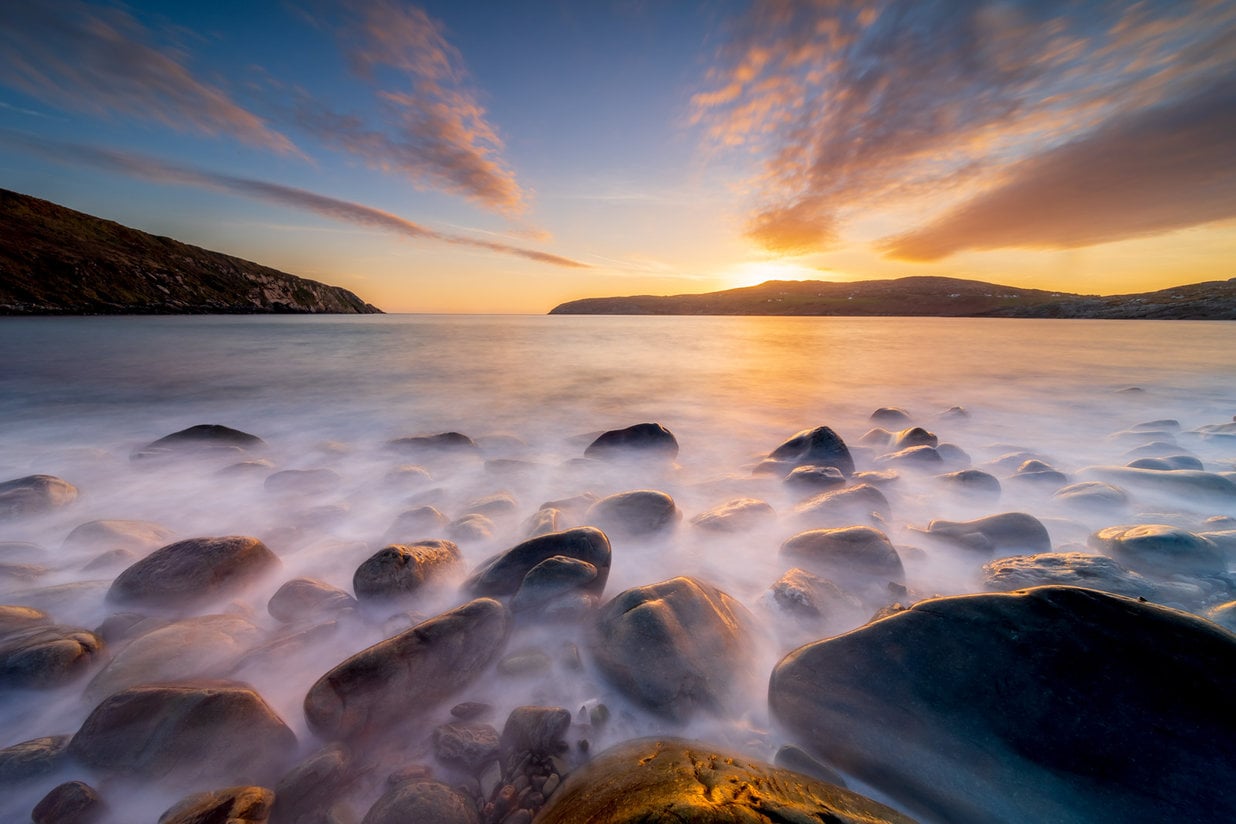
The most important part of Long Exposure Photography.
Without doubt the most important part of long exposure Photography has to be camera stability or to put it another way the biggest enemy to long expousre photography has to be camera shake. If your camera moves in anyway during the exposure it will ruin the shot.
So to capture really good long exposure Photographs you need to use a fairly steady tripod and more importantly you need to make sure you do not touch the camera or move around the tripod during the exposure.
5 things you need to do to prevent camera shake in Long Exposure Photography.
- Use a good quality tripod and lock it up tight.
- Use a timer or remote shutter release to avoid camera shake when pressing the shutter button.
- Remove the camera strap (especially if you are shooting in windy conditions).
- Don’t stand next to the tripod legs during the exposure unless the ground is very solid, shooting on sand or grass and standing next to the tripod leg or legs is going to be a disaster unless you stand incredibly still. p
- If you have a lighter tripod then use either hang your camera bag from the centre column of the tripod or even better bring a cloth bag with you and put some rocks or sand in it to weigh it down. This is very handy when shooting at the beach as you will also probably have waves hitting the tripod legs then too.p
When I am on one of my Photography workshops and I mention about a bag with sand or stone being better than a camera bag most people ask me why and the answer is actually very simple…
Most camera bags are fairly big and in all honesty not that heavy once your camera and lens is out of it. As it’s so big it catches a lot more wind then the bag with stones or sand will and also the weight of the sand or stones is hanging directly below the centre column so it’s better balanced then too.
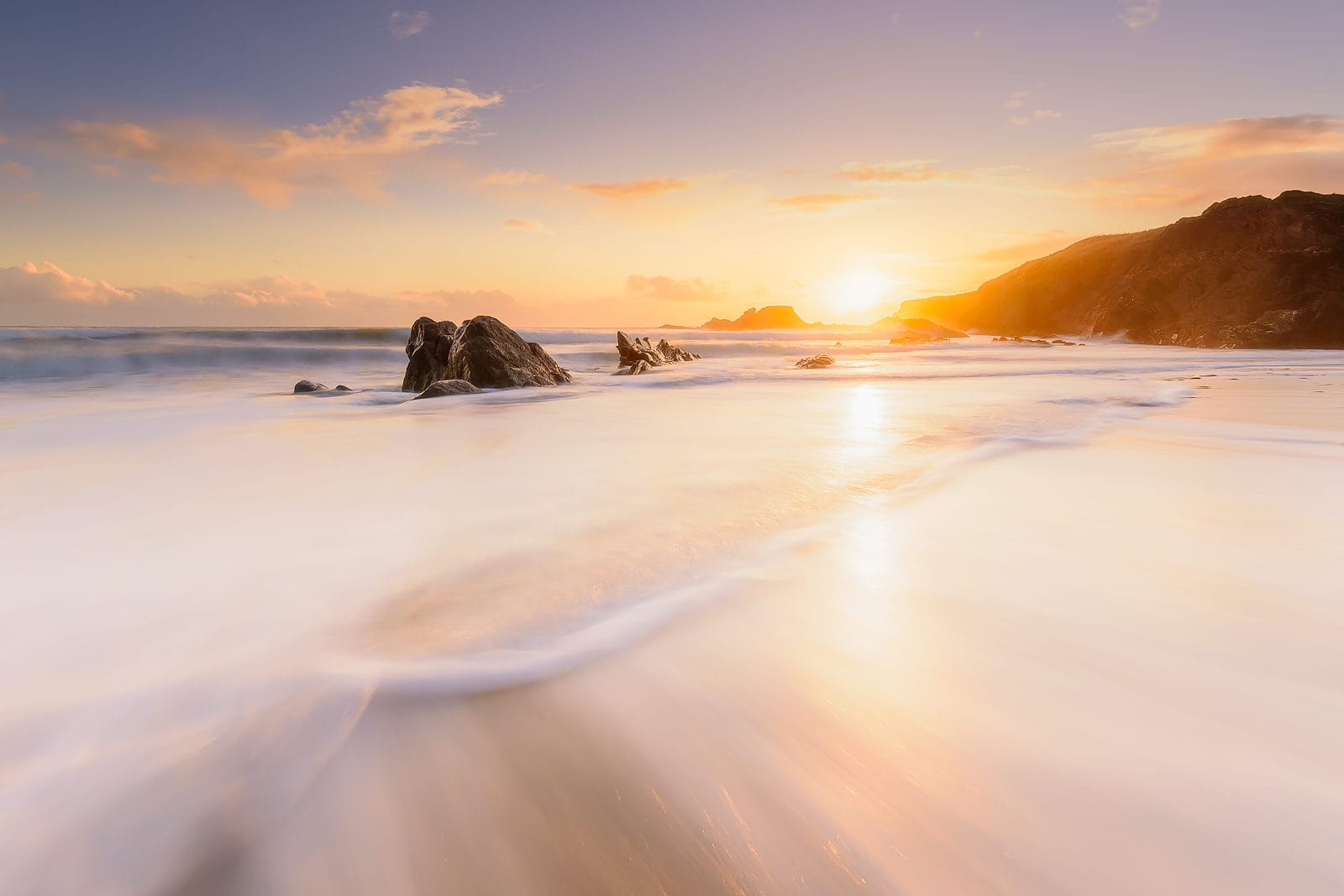
What are the advantages and disadvantages of longer shutter speeds?
As I mentioned above with long exposure photography we get this creative license to magically create the surreal out of the ordinary. Below I talk you through the advantages and disadvantages of using this technique.
Advantages of longer shutterspeeds
Now shooting longer long exposures will amplify movement even more and this surreal effect can turn water into milk by shooting 30 seconds or longer of of an exposure.
Take the photograph below as an example, I shot that with a 16 stop ND filter and it took 5 minutes to capture that photograph. As you can see it’s super soft now and the clouds are also being stretched across the sky beautifully.
With a stable camera the rocks have still come out very sharp despite all the movement around them.
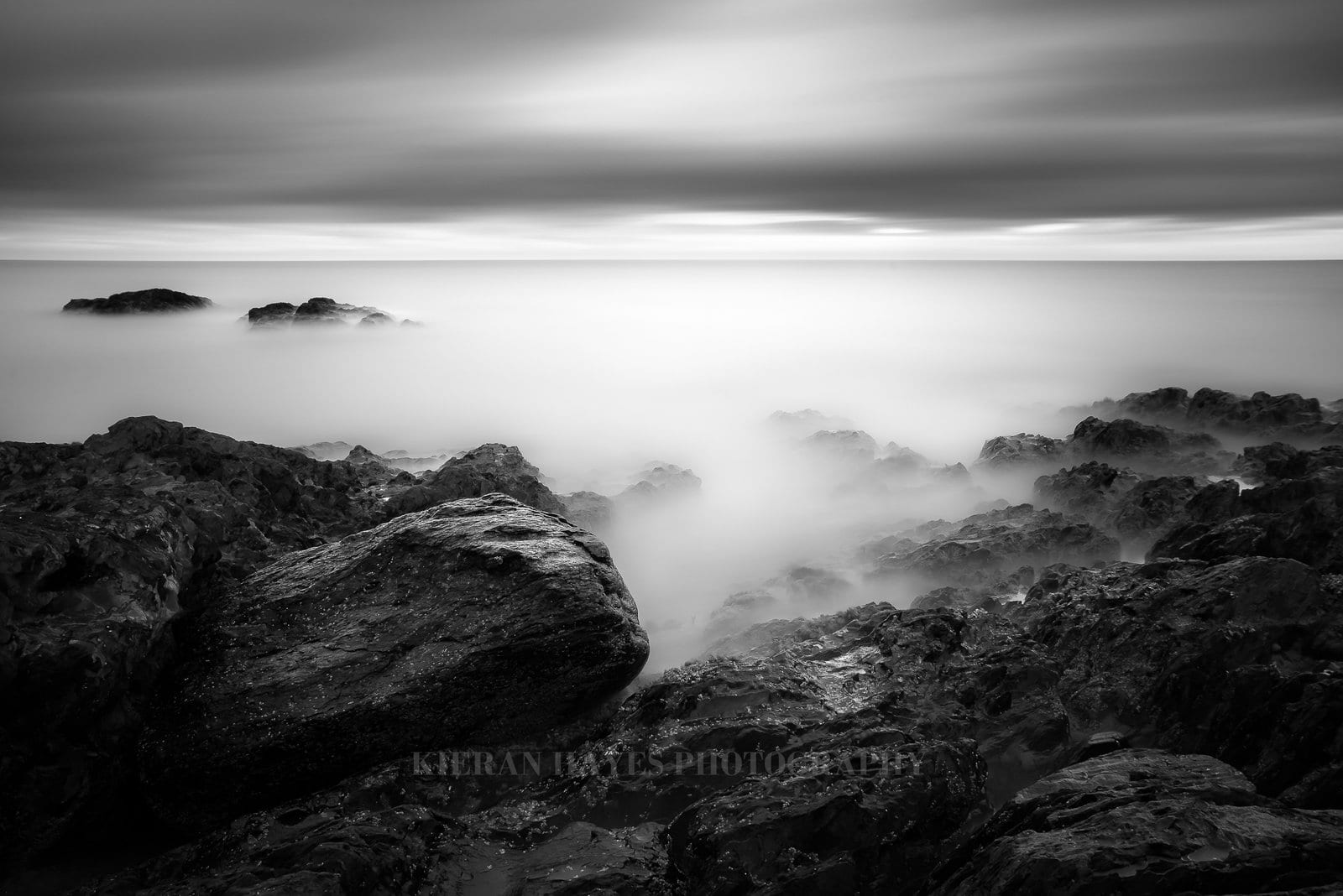
Disadvantages of longer shutterspeeds
The main disadvantage of shooting very long exposure is the colour noise you can get in your images. This is not your usual noise though, this is colour noise from hot pixels.
What are hot pixels?
When you take very long Exposures your camera is working for a lot longer to capture the image and as it’s working the sensor gets warm, with normal Long Exposure Photography this is not noticed though as the exposure isn’t long enough for the sensor to really heat up.
When you shoot longer than 2 minutes though your sensor starts to get warmer and warmer and this creates hot pixels which then show up in your image as tiny red, green or blue dots. Now a couple of these in a shot is no major issue but if your sensors gets really warm then you could get hundreds of them in your photograph.
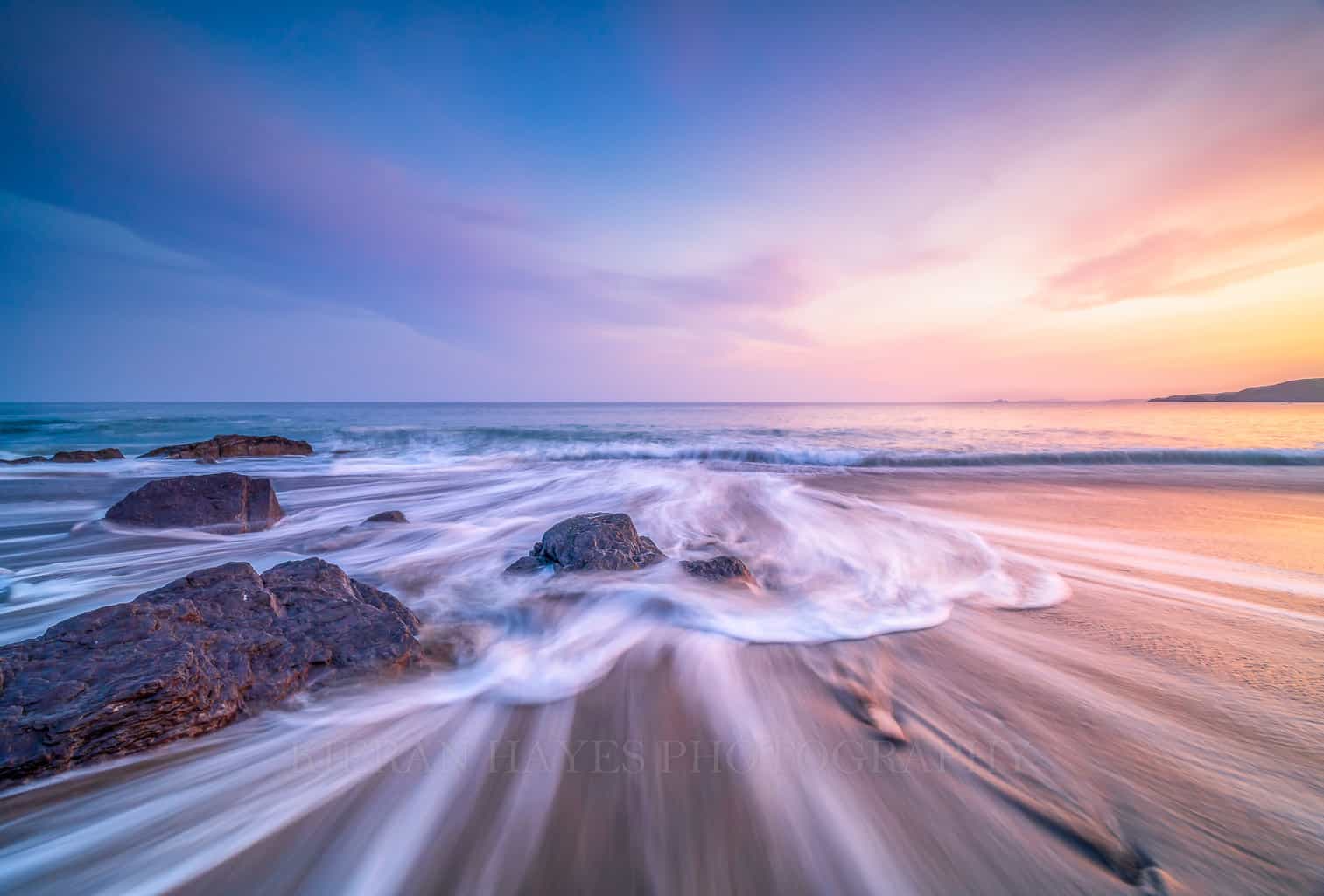
How to Compose A long Exposure Photograph
The first thing you need to do is is to really think about what the scene says to you and what you see the motion doing in the photograph.
This not only creates something unique to you and something you saw in your minds eye but it is also now captured as a moment of time, how utterly cool is that?
Next you need to compose your shot and wait for the right conditions and then fire off your exposure and hope your prediciton of what is about to happen is right.
So how do you Compose a long exposure photograph?
Ok, so in the previous step we looked at movement so now we need to blend or wrap that movement into our composition.
My theory on composition for Long exposure photography is very simple, we need a strong grounding point in the foregreound.
A grounding point is something that’s sharp and in focus with the movement hopefully wrapping around it hence creating an immediate point of interest in your photograph.
Without this element it could appear your photograph is out of focus or just blurred. Take the photograph below for example ad look how the and look at its with a completely blurred foreground and how it could confuse the viewer now think of the very same shot with a strong foreground object like the rock in the photograph below and see how that helps you rapidly make sense of the image.
It also provides this lovely contrast between the soft (moving elements) and harsh textures (the ones that are not moving) in your photograph.
You can of course also follow compositional rules like the Rule of Thirds (article here on it) if you want a bit more help with composition.
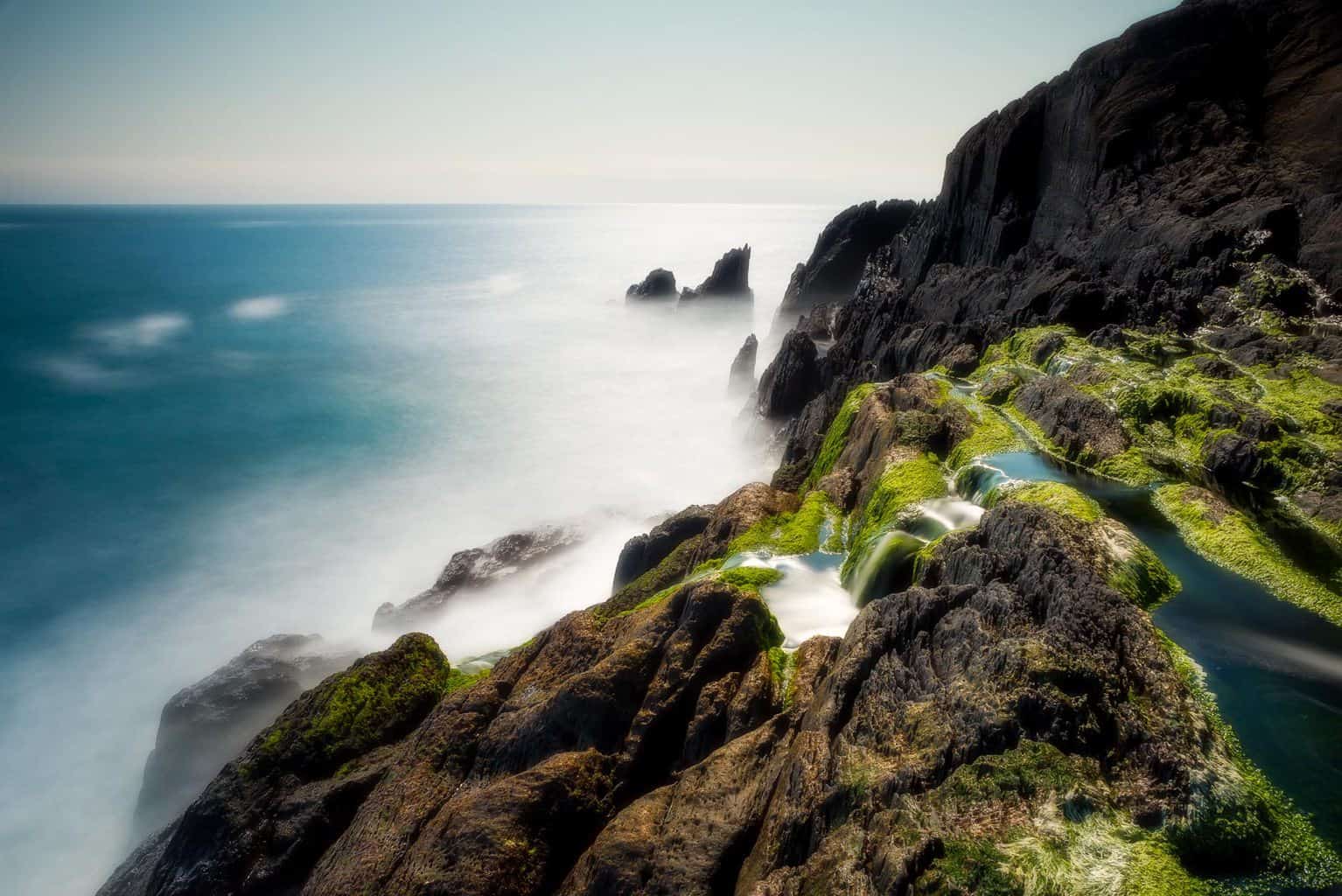
Ideally you want at least one of them in the foreground and even better if you can include one in the background also. This sharp detail tells the viewer that something unusual has happened here as you have a mdirect contrast between rough and smooth textures.
Combine that type of composition with a beautiful sunset and you have a really nice photograph that will keep you smiling for many years to come.
For me personally what I love about long exposure photography and especially seascapes is the challenge of it all.
You are standing there ankle deep in the water with the sea whipping past you, seaspray slowly covering you, your camera and filters in salt with the winding and waves trying to move both you and your camera.
Then you have the sun shooting straight down your lens and in with all that you are trying to capture something that hasn’t happened as of yet but you have seen happen in your own mind already.
Seascape long exposure photography has to be one of the hardest genres of photography to master but once you do I promise you it’s incredibly rewarding.
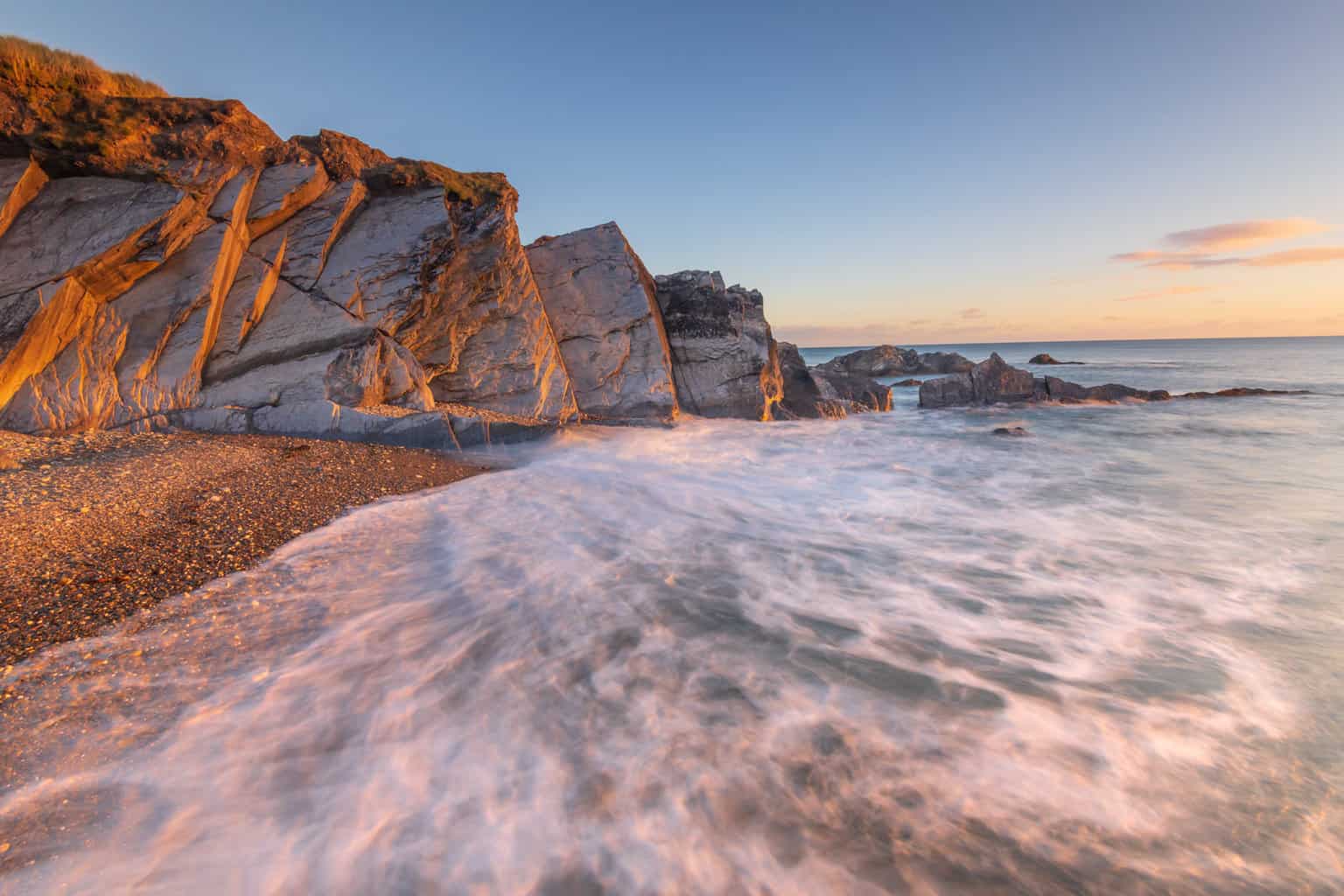
What are Neutral density or ND filters?
A Neutral Density or ND filter is a piece of special glass that has a coating that blocks light passing through it.
This coating is measured in stops and the more stops you have in an ND filter the more resistance you have to light. Think of ND filters as sunglasses for your camera.
I have a full blog post here explaining ND filters if you want to know more about them.
ND filter “stops” and what are they? You hear ND filters being described as a 10 stop ND filter or a 6 stop ND filters etc… so what does it mean?
A one Stop ND filter halves the amount of light actually passing through the ND filter, for example if I set up my camera in Manual Mode (tips here on that) and I am taking a photograph at 1 second and it’s correctly exposed, if I then pop on a 1 stop ND filter that now means I will need to take the photograph for twice as long to correctly expose it. So it now takes 2 seconds to take the photograph.
Halving the amount of light going into the camera means you need to let the camera see the picture for twice as long then.
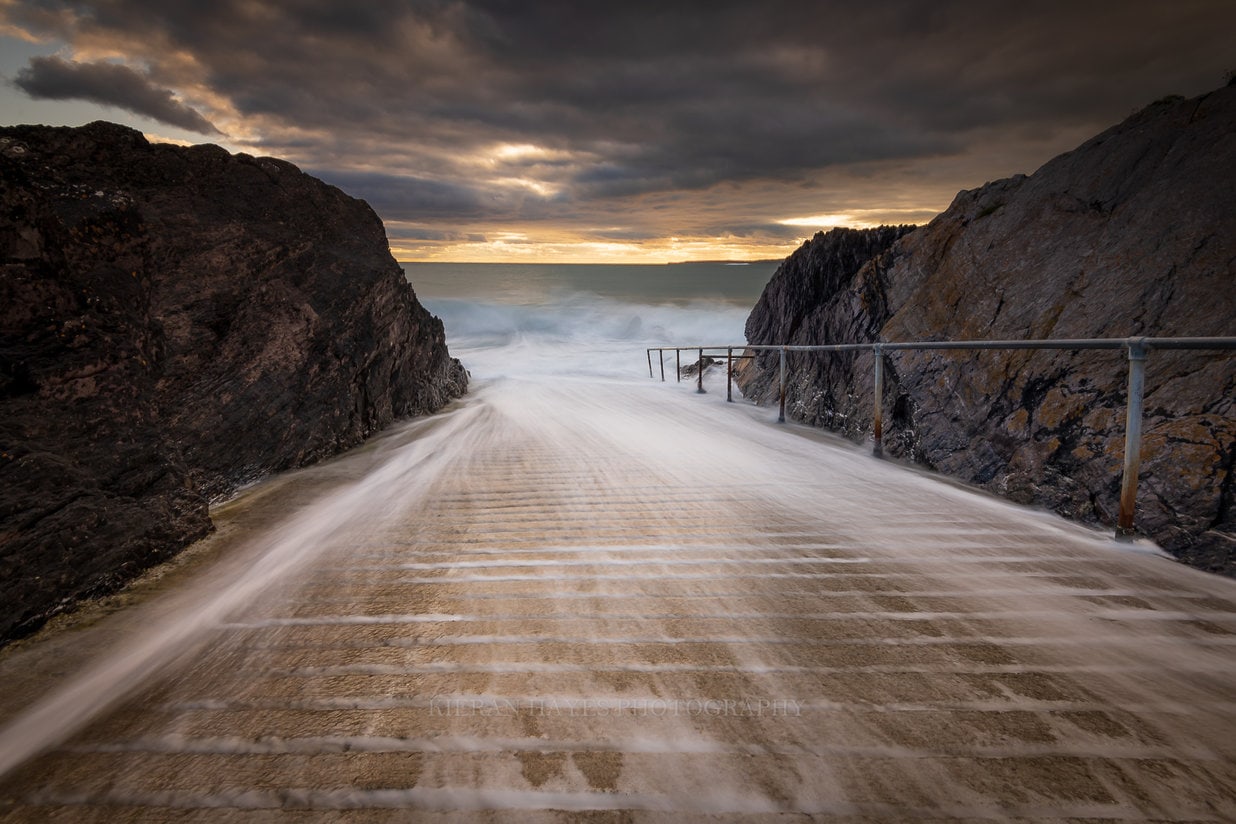
How do you know what strength ND filter to use?
You can get apps for IOS and Android like “ND Filter Expert” that work out the maths for you.
For example if I am shooting at 1/250th of a second with a correct exposure and I put on a six stop ND filter ND Filter Expert will tell you that your shutterspeed now needs to be 1/3 of a second.
Again puttin on a 10 stop ND filter the app tells you to go to set it to 4 seconds, so the app does all the work for you and takes the guess work out of it.
What type of ND filter should you use?
There are two two different physical types of ND filters available today, you have the Circular or screw-on ND filters and Square ND filters.
Screw-on filters, these are round filters that physically screws on to the lens, they are also available as magnetic clip on filters now and the second type are the filters I use that go into a physical filter holder which can hold a few different filters at the same time and can be removed easily, the easy use and ability to use graduated filters is incredibly important I go into it in more detail in my Square vs Circular ND filter article here.
I have a range of articles on ND filters and also how to use them in my ND Filters tips and tricks section here.
If you would like to learn more about photography with me in person then please do check out my Photography Workshops here as I run both group and one to one workshops in beautiful Ireland.
Thank you for reading my guide for long exposure photographers and I hope it helped you. If it did then please share it to help someone else.
See you out there,
Kieran.

